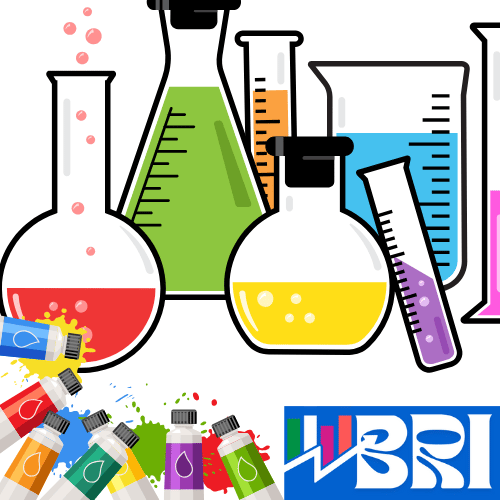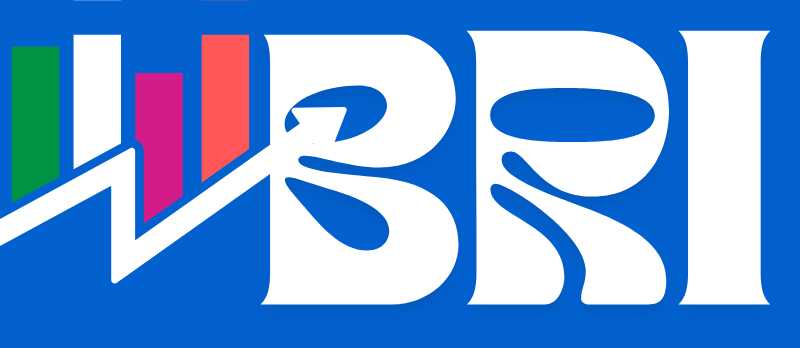
Aluminium Rolled Products Market Size
As per the Aluminium Rolled Products Market size analysis conducted by the CMI Team, the global Aluminium Rolled Products Market is expected to record a CAGR of 6.84% from 2025 to 2034. In 2025, the market size is projected to reach a valuation of USD 65.30 Billion. By 2034, the valuation is anticipated to reach USD 118.80 Billion.
Aluminium Rolled Products Market Overview
As per the industry experts at CMI, the aluminium rolled products market majorly depends on the market of aluminium rolled products, which is heavily dependent on final-use industry demand for sectors like automobile, aerospace, building, packaging, and electric industries, together with primary aluminium availability and price fluctuations.
Such factors have a direct influence on manufacturing volumes, cost structure, and application trends. Sustainability activities, including aluminium recycling and the utilization of light materials in green buildings and electric vehicles, also highly influence market conditions.
Aluminium Rolled Products Market Growth Factors and Dynamics
- Surging Demand in Automotive Sector: The strong demand in the global automobile market for lightweighting to boost fuel economy and reduce emissions to meet stringent pollution regulations has been a major driver for the consumption of aluminum rolled products. The excellent strength-to-weight ratio of aluminium makes it an excellent substitute for heavy metals like steel, especially in body panels, hoods, doors, and structural components. Major automakers are increasingly integrating aluminium to meet Corporate Average Fuel Economy (CAFE) standards and other environmental norms. Additionally, the growing production of electric vehicles (EVs) is further boosting aluminium consumption due to the need for lighter vehicle bodies to extend battery range. For example, Novelis Inc., a top manufacturer of aluminium rolled products, has invested $2.5 billion in a new advanced recycling and rolling facility in Bay Minette, Alabama (2022), with the purpose of supplying aluminum sheets largely to the expanding automotive industry. Therefore, manufacturers of aluminium rolled products are increasing their automotive-grade product offerings. Top automotive centers in North America, Europe, and Asia-Pacific are seeing strategic collaborations between automakers and aluminium companies, highlighting the central role of aluminium rolled products in the future of automotive manufacturing.
- Expansion in Aerospace Industry: The aerospace sector, which is characterized by its need for light but extremely strong materials, is a key growth driver for the aluminium rolled products market. Aluminium alloys are widely utilized in aircraft structures such as fuselages, wings, and interior parts due to their superior strength-to-weight properties, corrosion resistance, and workability. Growing number of global travelers, the expansion of low-fare carriers, and growing military expenditure are fuelling demand for new aircraft and therefore demand for rolled aluminium products. Additionally, newer aircraft designs prioritize fuel efficiency and decreased emissions, pushing even wider use of high-tech aluminium alloys at the expense of older heavy metals. Aircraft producers like Boeing and Airbus, as well as new entrants in Asia, are constantly seeking to use more aluminium parts, presenting strong opportunities for suppliers of aluminium rolled products. This trend is likely to continue, especially with the ongoing replacement of old fleets.
- Rise in Electric Vehicle (EV) Production: The expansion in electric vehicle (EV) manufacturing is transforming material requirements across the automotive value chain, and rolled aluminium products are the front-runner materials for applications in lightweighting. EVs require lighter body structures to counterbalance the weight of the battery in an effort to achieve optimal driving range, and aluminium’s natural properties light weight, strength, and recyclability – position it as the most appropriate material. Aluminium rolled sheets and plates are used in battery enclosures, body panels, structural frames, and heat exchangers. As governments around the globe implement aggressive zero-emission vehicle mandates and offer incentives for EV purchases, automakers are scaling up EV production, thereby amplifying aluminium consumption. Moreover, premium electric vehicle (EV) makers like Tesla, Lucid Motors, and Rivian rely heavily on aluminium-intensive design, setting industry benchmarks. For instance, Hydro Aluminium launched a new range of aluminium battery enclosures and light body structures in 2023 for electric vehicles, bolstering their partnerships with EV manufacturers in Europe. This increasing EV demand is forcing aluminium rolled product producers to expand specialty product lines for battery electric vehicle (BEV) architecture and safety requirements.
Report Scope
| Feature of the Report | Details |
| Market Size in 2025 | USD 65.30 Billion |
| Projected Market Size in 2034 | USD 118.80 Billion |
| Market Size in 2024 | USD 61.94 Billion |
| CAGR Growth Rate | 6.84% CAGR |
| Base Year | 2024 |
| Forecast Period | 2025-2034 |
| Key Segment | By Product, Grade, End User and Region |
| Report Coverage | Revenue Estimation and Forecast, Company Profile, Competitive Landscape, Growth Factors and Recent Trends |
| Regional Scope | North America, Europe, Asia Pacific, Middle East & Africa, and South & Central America |
| Buying Options | Request tailored purchasing options to fulfil your requirements for research. |
Aluminium Rolled Products Market SWOT Analysis
- Strengths: The aluminium rolled products market benefits from the corrosion resistance, high strength, and light weight of aluminium, and hence it is an essential commodity in the building, aerospace, packaging, and automotive industries. High recyclability also enhances its sustainability performance and makes it easier to implement circular economy policies and regulations. Continuous technological advancements in rolling techniques and alloy development also improve product quality and performance. Additionally, strong global players with vertically integrated operations—such as Novelis and Hindalco—enable economies of scale, consistent supply chains, and better cost efficiency, reinforcing market stability and long-term growth potential across developed and emerging economies.
- Weaknesses: Despite its strengths, the industry for rolled products made of aluminium suffers from major flaws, such as excessive energy use in manufacturing with resultant high production costs and pollution. Fluctuations in the prices of raw materials such as bauxite and alumina also affect margins and supply predictability. In addition, the capital-intensive nature of rolling mill installations can discourage new players and restrict flexibility for small companies. Uneven quality through incorrect rolling or choice of alloy can result in rejections or loss of reputation. Both these factors combined will make it difficult for non-integrated players to stay competitive, particularly within price-sensitive application segments.
- Opportunities: The global focus on lightweighting in transport is intensifying as a major opportunity for aluminium rolled products, especially since car manufacturers are starting to move toward electric vehicles to meet emission regulations. Applications of aluminium for eco-friendly packaging, including reusable cans for beverages and foil, are on the rise with increasing environmental awareness. Investments in infrastructure, particularly in developing economies, also increase the demand for aluminium plates and sheets in building and construction. In addition, the transition towards green manufacturing processes and efficient energy production provides opportunities for innovation and high-end product offerings. Strategic alliances and capacity growth in North America and Asia-Pacific equally offer opportunities for growth for major market players.
- Threats: The aluminium rolled products market also has to defend itself externally from substitute materials such as carbon fibre composites and high-strength plastics, stainless steel, and magnesium and stainless steel substitutes in packaging and auto industries. Supply chains can be disrupted and the global competitiveness impeded by trade restrictions, geopolitical tensions, and anti-dumping duties. Environmental regulations focusing on energy-consuming sectors could constrict or raise operating costs or production volume. The worldwide drive for decarbonization requires expensive overhauls to cleaner technology, compressing margins. Slumps in the economy or construction can also lead to cyclical downturns in demand, directly affecting sales and profitability of rolled aluminium products.
List of the prominent players in the Aluminium Rolled Products Market:
- Novelis Inc.
- Constellium SE
- Arconic Rolled Products Corporation
- Aleris Corp.
- Hulett Aluminium (Pty) Limited
- Hindalco Industries Ltd.
- AMAG rolling GmbH
- Alcoa Inc.
- Kaiser Aluminum Corp.
- JW Aluminum Continuous Cast Company
- Viohalco SA
- Granges AB
- Impol Aluminum Corp.
- Bharat Aluminium Company Ltd.
- Laminazione Sottile SpA
- Jindal Aluminium Limited
- Century Aluminum Co.
- Tri-Arrows Aluminum Inc.
- Logan Aluminum Inc.
- Norsk Hydro ASA
- Hydro Extrusion North America LLC
- United Aluminum Corporation
- Aluminum Corporation of China Limited
- China Hongqiao Group Limited
- China Zhongwang Holdings Limited
- United Company RUSAL Plc
- Emirates Global Aluminium
- Gulf Aluminium Rolling Mill Company
- Bahrain-based Gulf Aluminium Rolling Mill Company
- Aluminium Bahrain BSC.
- Others
The Aluminium Rolled Products Market is segmented as follows:
By Product
- Foil
- Plate
- Sheet
By Grade
- 1xxx Series
- 3xxx Series
- 5xxx Series
- 6xxx Series
By End User
- Automotive and Transportation
- Building and Infrastructure
- Packaging
- Consumer Durables
- Others
Regional Coverage:
North America
- U.S.
- Canada
- Mexico
- Rest of North America
Europe
- Germany
- France
- U.K.
- Russia
- Italy
- Spain
- Netherlands
- Rest of Europe
Asia Pacific
- China
- Japan
- India
- New Zealand
- Australia
- South Korea
- Taiwan
- Rest of Asia Pacific
The Middle East & Africa
- Saudi Arabia
- UAE
- Egypt
- Kuwait
- South Africa
- Rest of the Middle East & Africa
Latin America
- Brazil
- Argentina
- Rest of Latin America
[embedsocial_reviews id=”d4ae80cffae3d938f997111953699a733c8e6f99″]
